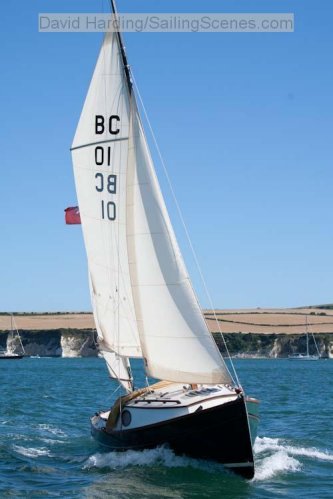


I have made the first alteration to the rig. Currently the mizzen sheets are cleated to little cam cleats on the side decks, outside the coaming. Quite neat, but they are out of sight and you have to reach blindly behind your back to adjust them. I noticed on the review of BayCruiser no 2 in WaterCraft that the mizzen cleats were fixed to knees in the aft corners of the cockpit and this looked a much better idea. The cleat is visible and the sheet drops into the cockpit. It also means the sheet doesn't foul any stern mooring ropes. I have copied this detail, using a piece of mahogany from an old table to form the knees. All epoxied into place and seems very strong. I am just wondering if I should put some screws into it as well. Only testing at sea will prove its worth.
No2 also has a main sheet track acros the back of the cockpit. I shan't copy this, but I have fixed a rope horse across to see if that has any effect one way or the other.
I have bolted the boarding ladder platform in place and it seems to work well. The extended ladder will go well beow the water surface, with at least two rungs below water. I think it will just about be able to deploy it from the water, but time will tell.
 I am hoping to make and fit a Chinese yuloh, a single sculling oar. For this I need a pivot point on the stern. To create this I have laminated a block on the edge of the ladder platform and fitted a carriage bolt through it. The domed head is to be the pivot. This just fits into a brass water pipe end stop, which I want to use as the socket on the underside of the yuloh. Now I need to make the oar itself. That could be quite a challenge, I have no idea quite what I need to do.
I am hoping to make and fit a Chinese yuloh, a single sculling oar. For this I need a pivot point on the stern. To create this I have laminated a block on the edge of the ladder platform and fitted a carriage bolt through it. The domed head is to be the pivot. This just fits into a brass water pipe end stop, which I want to use as the socket on the underside of the yuloh. Now I need to make the oar itself. That could be quite a challenge, I have no idea quite what I need to do.













